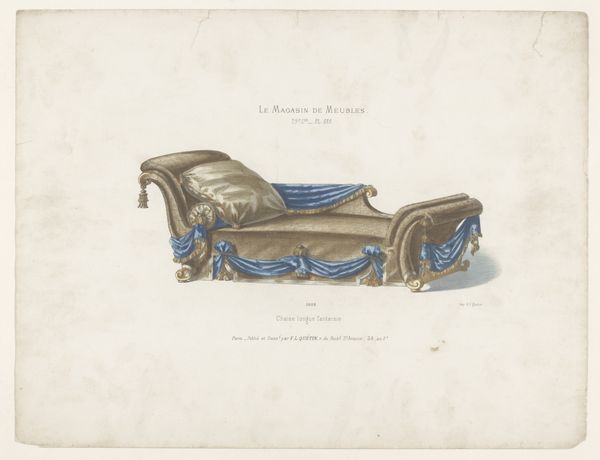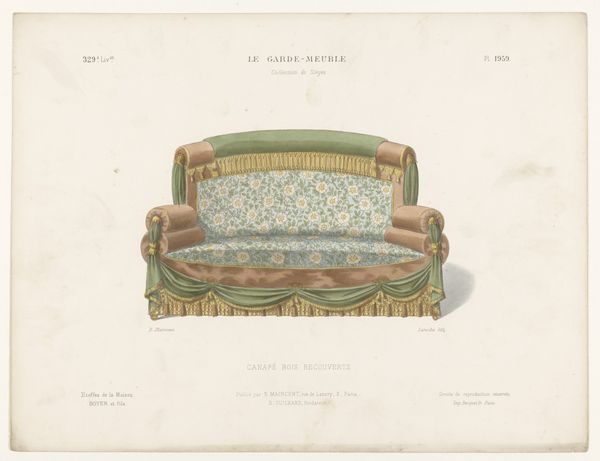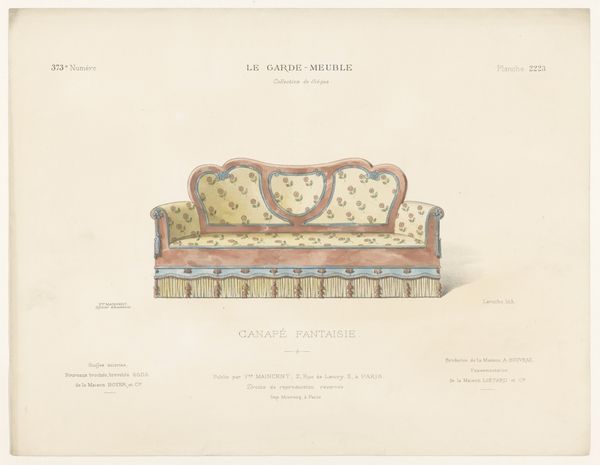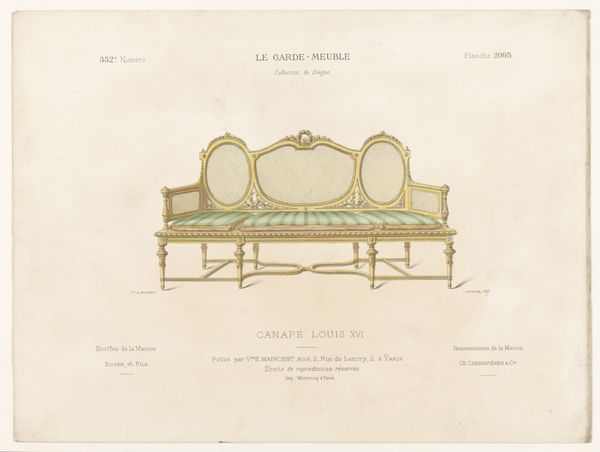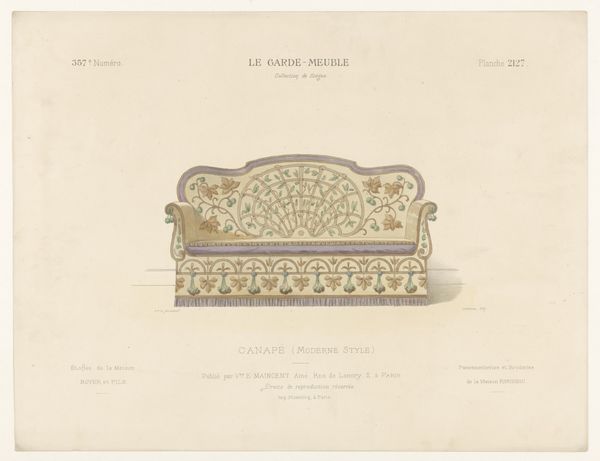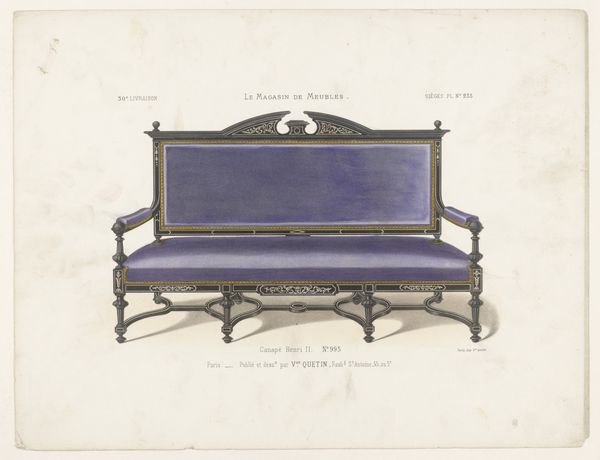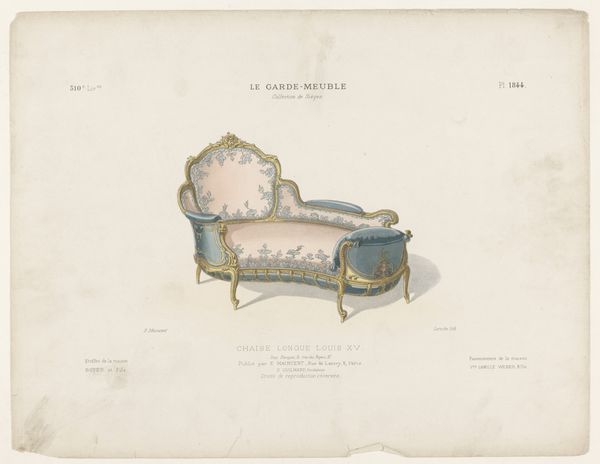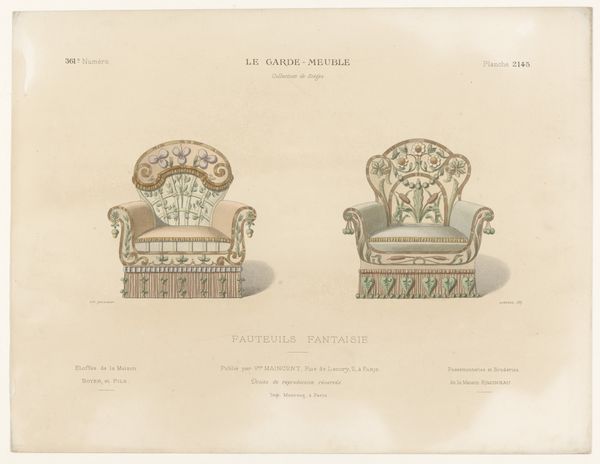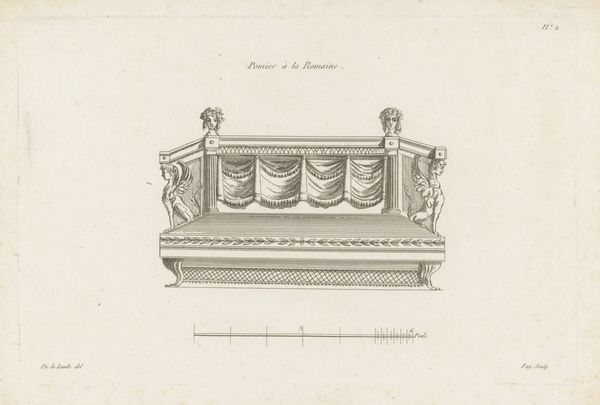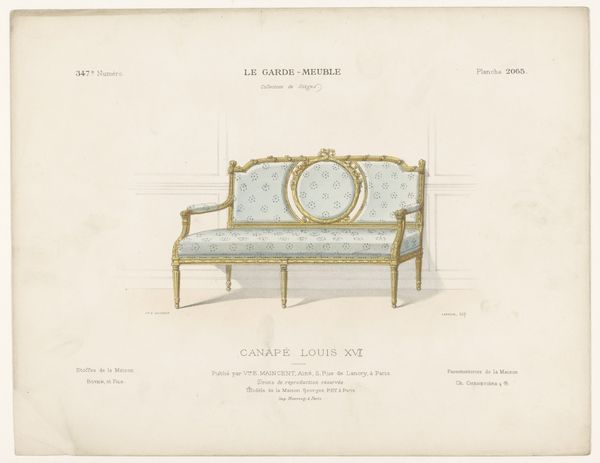
drawing, mixed-media, print
#
drawing
#
mixed-media
#
art-nouveau
# print
#
furniture
#
form
#
geometric
#
line
#
academic-art
#
decorative-art
Dimensions: height 274 mm, width 357 mm
Copyright: Rijks Museum: Open Domain
Curator: This drawing, dated between 1885 and 1895, is entitled "Canapé," and it is attributed to Léon Laroche. Crafted with mixed media, it presents itself as both a drawing and a print. What are your initial thoughts? Editor: A strangely muted opulence. The delicate lines detailing the ornamentation almost whisper wealth, while the sage green color palette mutes any sense of gaudiness. I find that tension rather fascinating. Curator: The use of line and geometric forms does soften what would otherwise be a grand object. I see echoes here of both Art Nouveau and earlier academic styles—a decorative rendering reflecting design principles that point towards symbolic functions embedded in this era. This era marks transition into increased industrialization, creating nostalgia. Editor: Exactly! It's as though it yearns for an era of handmade craftsmanship, a stark contrast to the burgeoning machine age of its time. This image acts like a symbol for elite domesticity. We must remember how this and related images functioned as social currency for cultural institutions to collect these drawings which promoted access to designs, styles, and taste that defined the upper classes. Curator: We see "Canapé Henri II" mentioned within the print, alluding to historical styles. This piece serves as a record, an index of style intended to instruct and possibly inspire furniture makers and consumers alike. Consider that for centuries symbols embedded in material culture reflected an entire range of cultural values including class, spiritual life, and historical significance. Editor: Right, and the careful rendering and distribution of the print is equally crucial, as that distribution shapes and determines aesthetic sensibilities—think of who has access to these visual symbols and how the production of such images reinforce the canon. The choice of green, even its subdued tone, is significant as an emblem of prosperity associated with the French upper classes during the 19th century. Curator: Yes, so looking beyond the immediate subject matter, we have this drawing-print hybrid functioning as a kind of aspirational prompt that also gestures toward class aspiration and consumerism. Editor: Fascinating. For me, it really underscores the complex dance between artistic expression and its societal roles, something institutions, even today, have to acknowledge. Curator: A beautiful paradox: the ornamental sign as a cultural value. Editor: Indeed! Something so seemingly decorative acting as such an intentional communicator about status.
Comments
No comments
Be the first to comment and join the conversation on the ultimate creative platform.

